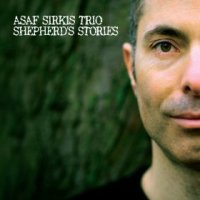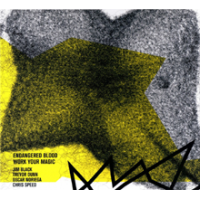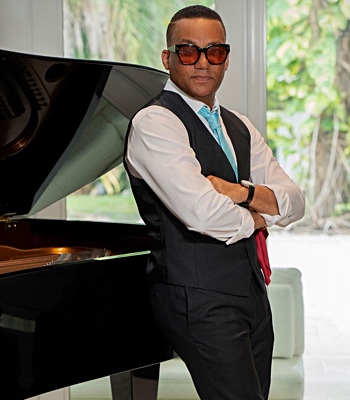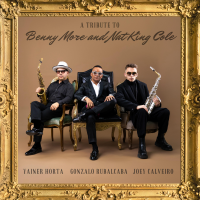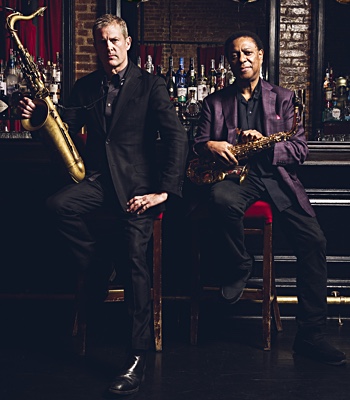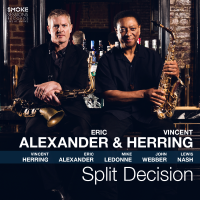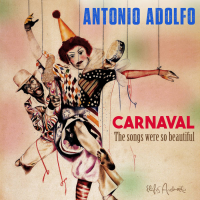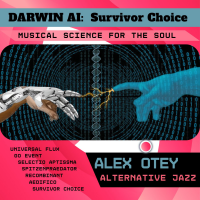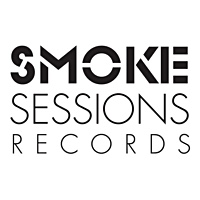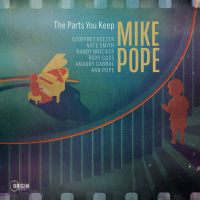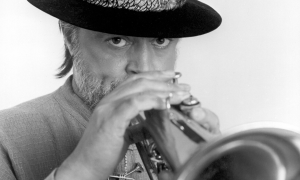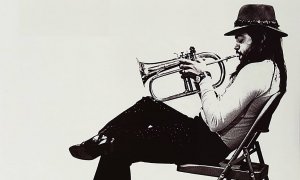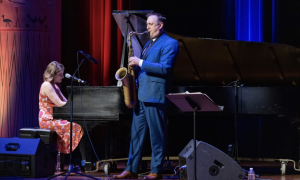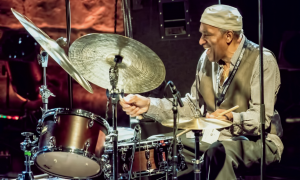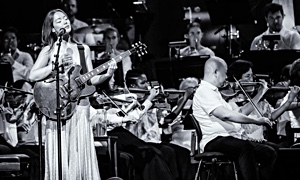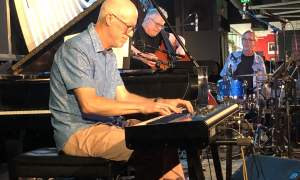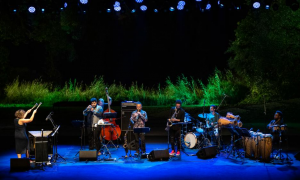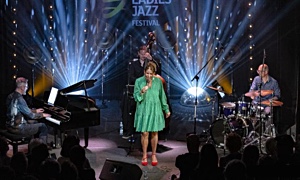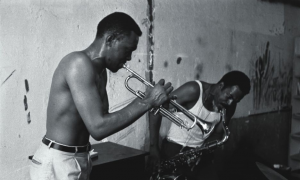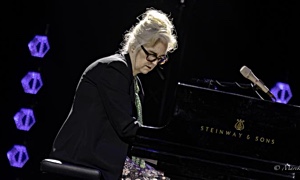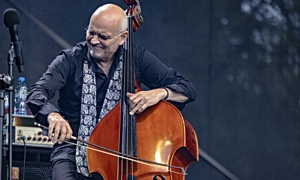Home » Jazz Articles » Catching Up With » Mike Dillon: Rhythm Method
Mike Dillon: Rhythm Method

You hear people say that jazz is dead or rock is dead, but in some ways I wake up every day more excited than ever about all the possibilities and how good we have it.
—Mike Dillon
Dillon sports a wide-ranging musical résumé. He has led or has been a member of outfits such as Critters Buggin', Les Claypool's Fancy Band, The Dead Kenny G's, Mike Dillon's Go-Go Jungle, and Garage a Trois. He led Billy Goat in Dallas, Malachy Papers in Kansas City, and Hairy Apes BMX in Austin at various points over the last two decades. Since moving to New Orleans in 2006, he has performed regularly with New Orleans stalwarts Johnny Vidacovich and James Singleton.
His current project, the Mike Dillon Band, currently on a months-long get-in-the-van-and-go tour of the United States, combines jazz, funk, rap, Afro-Cuban and no-wave, rockin' a happy, bottom-heavy stew.
The band, which released Urn (Royal Potato Family, 2012), is comprised of Dillon on vibes, percussion, and vocals, Carly Meyers on trombone and percussion, Patrick Mcdevitt on bass, Adam Gertner on drums, and Johnny Durkin on congas.
They are a loose and funky outfit, the 47-year-old Dillon leading a group of kids in their early 20s. Meyers, McDevitt, and Gertner, from the Denver area, all went to New Orleans to study music, started hitting jam sessions and taking lessons from older musicians, and eventually dropped out of school, figuring that living the musician life would be the best education.
In conversation with Dillon, the importance of self-education and seeking out good instruction is made clear—not surprisingly, from a son raised by teachers—and Dillon's mentoring of the rest of his band is in the Art Blakey tradition.
Dillon has always been fixated on percussion.
"From a very young age, it was definitely the drum. I was just attracted, whenever I saw music, live with my parents—I'm talking when I was four, five, six—or on TV, I was always fixated on the drummer. From a young age I was always beating on things, so my quest definitely been through the eyes of percussion."
Growing up in Texas in the '70s, the son of high school teachers who moved all around the state, Dillon was fortunate to be exposed to a lot of great drummers and teachers. When he was in sixth grade, by this time with the family settled in Houston, his mother approached the high school band director to find a good drum instructor to get him started on the rudiments.
Dillon played mallets, marimba, and vibes in the Houston Youth Symphony in his high school years and at the same time usually had a little jazz band going, where he played drums. Eventually, he went to North Texas State, where he did three and a half years of classical studies. During that time, he got into Afro-Cuban music, working with congas and timbales, while returning to Houston in the summers and playing jazz, and getting his ass kicked, as he puts it, by the older musicians. But Dillon was also learning from those older musicians, such as Joel Fulsom, who would always tell Dillon to listen to Art Blakey.
After college, Dillon did stints in Austin and Dallas, before ending up in Kansas City, where he found a lively scene, with as he says, lots of great musicians to jam with.
It was in the mid-'90s, when he was living in Kansas City, that he started concentrating most of his energy on the vibraphone. Dillon has cited Milt Jackson as a touchstone jazz vibraphonist, but Tito Puente was also a big influence, Dillon says, less harmonically complex than Jackson, but more interesting from the perspective of a percussionist, and a good starting point.
"Since that time, it's been all about the vibraphone, rather than congas and timbales as it had been, even though I still play them both all the time and I love them."
You wouldn't necessarily suspect it, but initially, Dillon had some trepidation about stepping over certain boundaries.
"I had all the chops from playing classical music, but I had to get over my fear of improv and playing jazz, or whatever they call it these days. Then I realized that so much of that is what is in my head. Whatever your fear is, you have to play through it. Everything is this fear."
"You have to study, and you have to learn the language. And all music, it's like what Miles Davis said, it's about talking. No matter what music form you're playing, it's about talking and saying something. That's really the goal. It's not these genres we're brought up with here because of commercial sales or whatever—really, it's all about learning how to talk."
Dillon loves the stories that older musicians tell him of playing with jazz greats, stories of jazz beat-downs, young musicians getting their asses kicked—learning, always learning. Playing with other musicians came with a history lesson.
But gentler advice was forthcoming as well.
Dillon recalls the first time that he played in a trio with New Orleans drummer Johnny Vidacovich, and bassist James Singleton. Dillon was not sure what he was going to do with the extra musical space. "It's all about the rhythm," Vidacovich counseled Dillon. "So I just concentrated on the rhythm, got out of my head."
Dillon talks about getting Led Zeppelin IV (Atlantic, 1971) when he was ten years old, and practically wearing the vinyl out.
"We have more access to information than ever, and I don't know if that's a bad thing or a good thing, because a kid would get one record and really get into it. Now, we can find all the live performances by any band you want on YouTube. But that kid would really get into the record, and maybe that's something that's been lost."
The oral tradition of the musician may be threatened by the easy access to information we now enjoy, but Dillon clearly feels his responsibility to help educate younger musicians. In Meyers, McDevitt, Gertner and Durkin he has found four who are hungry to learn, to get out on the road to play their own music, driving back and forth across America.
This summer, they've been on the west coast, and recently played at the Telluride Jazz Celebration. August will be a full month of gigs for the band, with dates including Chicago, Ferndale, Pittsburgh and Brooklyn, ending up in Raleigh, NC at the end of the month.
Meyers is the visual focus of the show. She dresses colorfully, typically in shorts and knee socks, jumps, hops, and dances around, all while playing a pretty mean trombone. Dillon's lyrics are socially aware; his between-song rap includes a rant about white male privilege, the U.S. Constitution and a recommendation to read Howard Zinn. It's fun and it's sweaty, and it's pushing a bunch of different musics down Funky Road.
"Carly has got a lot of heart," Dillon says of Meyers.
"I watch her getting better and better every night. Her energy is crazy. When she's not soloing, she's dancing, hyping the crowd up, grabbing the percussionist. She's out of her mind. Yet she sits around and studies and practices whenever she gets a minute. Whatever that thing is in musicians that makes you have to practice and get better, she's got all the elements, and I'm really excited to see what she ends up doing."
"She just turned 22 on the 29th of June. When I was 22, I was working in a chicken restaurant and going to college," he laughs.
"All kinds of musicians see her and go, "Wow, where'd you find her? You'd better watch out, someone's going to steal her from you!'"
Both John Zorn and Ken Vandermark, like Dillon, are playing music and leading projects that deal with jazz through a sensibility forged in large part by rock, but both Zorn and Vandermark are more self-consciously intellectual than Dillon, who has taken a more down- and-dirty approach to making music.
So, punk jazz?
"It seems like a lot of the guys in the clubs back in the old days, maybe it wasn't so much about danger, but there was a certain shamanistic nature to their playing, and they were sweaty, and they working hard, while Zorn and Vandermark are heavy intellectuals. I appreciate that. That's what I appreciate about Charles Mingus and [{Thelonious Monk}}. We know that Monk was a heavy intellectual. Mingus too. But Mingus had that other side too. We've all heard stories. Those guys were the original punk rockers, as far as I'm concerned. Punk rock is not trying to copy something, it's being unique and unique in saying it in your own voice, and that's what I've always tried to go for. "
"That's why I like putting my vibraphone through a 4-12 amp, and I'm like, alright, I see possibilities with my instrument that haven't been done yet—and just putting the action and enthusiasm into the playing and not being so intellectual, being sweaty and playing and coming from the shamanistic side. You need to feel the communion between the audience and the band, and it's sweaty and it's hot and it's disgusting. The last time we played in New York, the air conditioner was broke, there were 50 or 60 people down there in a space for 20; it was just close. But to me that was so beautiful, because we were all sweating and we were playing and the music went somewhere, and we came away from it cleansed and happy."
"Just the ritual of music is important to me, and that's why I do it. We're in a period of three months straight on the road—and the music gets better every night. You're touring, you're driving around, you're avoiding semis. I mean, there's a lot of danger in music," he laughs, "the act of playing it nightly."
"We really have it good, that we can go around and play, no matter level you're at, whether you're struggling to get 50 or a 100 people to your gig, the bottom line is we love music, and we get to play it."
"We're living in a really remarkable time. There's so much music out there. You hear people say that jazz is dead or rock is dead, but in some ways I wake up every day more excited than ever about all the possibilities and how good we have it."
Tags
Mike Dillon
Catching Up With
Mike Chamberlain
Canada
Montreal
Critters Buggin
Garage A Trois
Johnny Vidacovich
Patrick McDevitt
Art Blakey
Milt Jackson
Tito Puente
Miles [Davis]
john zorn
Ken Vandermark
Charles Mingus
Comments
PREVIOUS / NEXT
Support All About Jazz
 All About Jazz has been a pillar of jazz since 1995, championing it as an art form and, more importantly, supporting the musicians who make it. Our enduring commitment has made "AAJ" one of the most culturally important websites of its kind, read by hundreds of thousands of fans, musicians and industry figures every month.
All About Jazz has been a pillar of jazz since 1995, championing it as an art form and, more importantly, supporting the musicians who make it. Our enduring commitment has made "AAJ" one of the most culturally important websites of its kind, read by hundreds of thousands of fans, musicians and industry figures every month.



